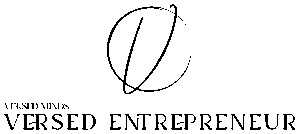For many aspiring entrepreneurs and small business owners, preparing for a job interview can feel like navigating uncharted waters. A 30 60 90 day plan for interview purposes serves as a roadmap for your first three months on the job, offering a structured approach to onboarding and setting expectations.
Here’s a quick rundown of a 30 60 90 day plan for interview:
- 30 Days: Focus on learning the ropes—understand company processes, culture, and your role.
- 60 Days: Begin evaluating what works and what needs improvement—start forming plans for meaningful contributions.
- 90 Days: Implement strategies that maximize impact—drive change and measure its success.
The 30 60 90 day plan for interview is not just about impressing potential employers; it’s about equipping yourself for success by setting clear, actionable goals from the outset. This strategic framework communicates your readiness to adapt and excel.
I’m Gabrielle Reese, and I’ve spent years helping entrepreneurs and business enthusiasts steer new career challenges. My experience with 30 60 90 day plan for interview preparation empowers others with the tools they need to make informed choices and thrive in their new roles.
30 60 90 day plan for interview word roundup:
– job interview success
– tips for interview success
– tips for project management interview
Table of Contents
ToggleWhat is a 30-60-90 Day Plan?
A 30-60-90 Day Plan is a strategic outline that details your goals and actions for the first three months in a new job role. It’s like a roadmap that helps you transition smoothly into your new position, ensuring you understand your responsibilities and how to meet them.
Definition and Structure
The plan is typically divided into three segments:
- 30 Days: The learning phase. This is where you get acquainted with the company’s processes, culture, and your specific role.
- 60 Days: The evaluation phase. You begin assessing what works, identifying areas for improvement, and setting goals.
- 90 Days: The optimization phase. Here, you implement strategies, introduce improvements, and measure your success.
Written Outline: Paper-Based or PowerPoint
This plan can be presented in two main formats:
- Paper-Based: A simple document that clearly outlines your strategy and objectives.
- PowerPoint: A visual presentation that can make your plan more engaging and easier to digest.
Both formats should be concise, ideally between one to four pages or slides, focusing on actionable goals and measurable outcomes.
Why It Matters
Creating a 30-60-90 Day Plan shows employers that you are proactive and prepared. It demonstrates your understanding of the job role and your commitment to making a positive impact. By setting clear goals from the start, you position yourself as a valuable asset to the organization.
This plan is not just for show; it serves as a personal guide to help you steer the complexities of a new work environment. Whether you’re using a paper-based document or a PowerPoint presentation, the key is to tailor it to the specific employer and the role you’re applying for. This customization shows that you’ve done your homework and are serious about the opportunity.
In summary, a 30-60-90 Day Plan is a powerful tool in your job interview arsenal, offering clarity and direction for both you and your potential employer.
Benefits of a 30-60-90 Day Plan
Clarity and Job Expectations
A 30-60-90 Day Plan provides clear expectations for both the employee and employer. It outlines what you aim to achieve in your first three months, setting a clear path forward. This clarity helps you understand your role and responsibilities, reducing uncertainty and stress.
Preparation and Professionalism
Arriving at an interview with a well-thought-out plan shows that you are prepared and professional. It signals to potential employers that you have taken the time to understand the role and are ready to add value from day one. This level of preparation is often unexpected, making you stand out as a candidate.
Screening Candidates and Gauging Experience
For employers, a 30-60-90 Day Plan is a tool to screen candidates effectively. It helps them gauge your experience and see how well you fit with the company’s goals and culture. By presenting your plan, you demonstrate your ability to think strategically and align your actions with the company’s objectives.
Attracting Better Candidates
Companies that encourage candidates to prepare a 30-60-90 Day Plan often attract higher-quality applicants. This requirement signals that the company values strategic thinking and initiative, attracting candidates who are serious about their roles and committed to success.
Key Benefits at a Glance
- Clarity: Defines clear goals and expectations.
- Preparation: Demonstrates readiness and professionalism.
- Screening: Helps employers assess candidate fit.
- Attraction: Draws in motivated, high-quality applicants.
A 30-60-90 Day Plan is not just a formality. It’s a strategic tool that benefits both job seekers and employers, ensuring a smoother transition and a stronger alignment with the company’s mission and objectives.
How to Create a 30-60-90 Day Plan for Job Interviews
Creating a 30-60-90 Day Plan can set you up for success in your new role. This plan breaks down your first three months into manageable phases, each with specific goals and action items. Let’s explore each phase.
30 Days – Learning Phase
The first 30 days are all about learning. Your primary goal is to understand the company’s processes, people, and products. Start by familiarizing yourself with the corporate culture and team dynamics.
Key Targets:
- Processes: Learn the internal workflows and procedures.
- People: Meet your team and key stakeholders. Understand their roles and how you fit in.
- Product: Dive deep into the products or services your company offers. Know the competition.
Action Items:
- Schedule meetings with team members and stakeholders.
- Attend any available training sessions or workshops.
- Review company materials, such as manuals and reports.
60 Days – Evaluation Phase
In the next 30 days, focus on evaluating what you’ve learned. Use this time to perform a SWOT analysis to identify strengths, weaknesses, opportunities, and threats within the company or your role.
Key Targets:
- Evaluate Processes: Identify areas for improvement.
- SWOT Analysis: Assess internal and external factors affecting your role.
- Set Goals: Establish SMART goals based on your analysis.
Action Items:
- Gather feedback from colleagues and supervisors.
- Review performance metrics and existing KPIs.
- Propose improvements or changes based on your findings.
90 Days – Optimization Phase
By the final 30 days, you should be ready to implement strategies and optimize processes. This phase is about action and measuring success.
Key Targets:
- Implement Strategies: Roll out new procedures or improvements.
- SMART Goals: Ensure your goals are Specific, Measurable, Achievable, Relevant, and Time-bound.
- Measure Success: Use KPIs to track progress.
Action Items:
- Execute the changes you’ve planned.
- Monitor outcomes and adjust strategies as needed.
- Continue to seek feedback to fine-tune your approach.
Flexibility is crucial throughout this process. Be prepared to adapt your plan based on new information or feedback. Meeting stakeholders regularly can help refine your strategies and ensure alignment with company objectives.
By structuring your 30-60-90 Day Plan around these phases, you can demonstrate your strategic thinking and readiness to contribute meaningfully to your new role.
Tips for Making Your 30-60-90 Day Plan
Creating a 30-60-90 Day Plan isn’t just about listing tasks. It’s a strategic tool to show your readiness and fit for the job. Here’s how to make it effective:
Research the Company and Role
Start with thorough research.
Before anything else, dive deep into the company’s mission, values, and current challenges. This will help align your plan with what matters most to them. Use resources like the corporate website, LinkedIn, and news articles to gather insights.
Understand the job description.
Identify the key responsibilities and expectations. This will guide you in setting relevant goals for each phase of your plan. Knowing the specifics helps tailor your plan to the role, showing that you’re not just a good candidate but the right one.
Explain Your Plan Clearly
Communicate your plan effectively.
When you present your plan, clarity is key. Use simple language and a structured format, like a PowerPoint or a one-page document, to make it easy to follow. Highlight how each phase of your plan supports the company’s strategic initiatives.
Highlight Your Achievements
Don’t be shy to brag a little.
Share past successes that demonstrate your ability to achieve the goals in your plan. For example, if you increased sales by 20% in a previous role, mention it to show you can drive results. This builds confidence in your capabilities.
Set Priorities and Measurable Goals
Identify your top priorities.
Look at the big picture and decide what’s most important for your role. Maybe it’s improving a process or building a key relationship. Prioritize these in your plan to show focus and strategic thinking.
Make goals measurable.
Use SMART goals—Specific, Measurable, Achievable, Relevant, and Time-bound. For instance, aim to reduce customer response time by 10% in the first 60 days. Measurable goals give you clear targets and make it easier to track progress.
Be Ready to Course-Correct
Stay flexible.
Your plan should be adaptable. If you find something isn’t working, be prepared to adjust. This shows you can handle change and are committed to finding the best path forward.
Ask Questions
Engage with the team.
Don’t hesitate to ask questions. Whether it’s about company processes or team dynamics, asking shows initiative and a desire to understand. It also helps you refine your plan to better fit the company’s needs.
By following these tips, you can create a 30-60-90 Day Plan that not only impresses in interviews but also sets the stage for success in your new role.
Creating a 30-60-90 Day Plan is essential for showcasing your strategic approach during job interviews. It demonstrates your ability to set learning, initiative, and change goals, ensuring you’re prepared to make a significant impact. Here’s how to craft an effective plan:
Learning Goals (First 30 Days)
In the initial month, focus on gaining a comprehensive understanding of your new environment. Key areas include:
-
Processes and Procedures: Familiarize yourself with the company’s systems and tools. Understand the products or services thoroughly to ensure you can contribute effectively.
-
People and Culture: Engage with your team and other departments. Grasp the corporate culture and values, as building these relationships is crucial for future collaboration.
-
Competition: Identify competitors and understand what sets the company apart. This insight will be valuable for aligning your future strategies.
Initiative Goals (Next 30 Days)
The second month is about taking initiative and beginning to make your mark.
-
Evaluate Current Processes: Conduct a SWOT analysis to identify strengths, weaknesses, opportunities, and threats. This will help you pinpoint areas for improvement.
-
Set New Goals: Based on your evaluations, establish clear and actionable goals. Ensure these align with the company’s strategic initiatives and your role.
-
Feedback Loop: Begin gathering feedback from your supervisor and peers. This will help refine your approach and ensure you’re on the right path.
Change Goals (Final 30 Days)
In the last month, focus on implementing changes and optimizing processes.
-
Implement New Strategies: Roll out new procedures or improvements identified during your evaluations. Ensure these align with the SMART goals you’ve set.
-
Measure Success: Use KPIs to track progress and measure success. This could include metrics like time-to-productivity or process efficiency improvements.
-
Re-evaluate and Adjust: Re-assess your changes and make adjustments if necessary. Continuous improvement is key.
Timeline and Scorecard
A timeline helps keep your plan on track. Here’s a simple way to structure it:
| Phase | Goals | Timeline |
|---|---|---|
| 30 Days | Learn processes, meet team, understand competition | Week 1-4 |
| 60 Days | Evaluate processes, set new goals, gather feedback | Week 5-8 |
| 90 Days | Implement changes, measure success, re-evaluate | Week 9-12 |
A scorecard can help you track progress and ensure you’re meeting your objectives. Include metrics like:
- Learning Completion: % of processes and tools understood
- Initiative Success: Number of improvements identified and initiated
- Change Effectiveness: % of new strategies successfully implemented
By following this structure, your 30-60-90 Day Plan will not only guide you through your first three months but also demonstrate your strategic thinking and commitment to driving results.
Frequently Asked Questions about 30-60-90 Day Plans
How do you write a 30-60-90 day plan for an interview?
Creating a 30-60-90 day plan for an interview involves a few key steps. Start with a clear template that outlines your goals, action items, and timeline for the first three months on the job. Your plan should be structured around SMART goals—Specific, Measurable, Achievable, Relevant, and Time-bound—to ensure clarity and focus.
Here’s a simple breakdown:
- 30-Day Goals: Learning Phase
- Action Items: Understand company processes, meet the team, and learn about the industry. This phase is about absorbing as much information as possible.
-
SMART Goal Example: “By the end of the first month, I will have met with all team members and completed training on the company’s main software tools.”
-
60-Day Goals: Evaluation Phase
- Action Items: Evaluate current processes and identify areas for improvement. Conduct a SWOT analysis to understand strengths and weaknesses.
-
SMART Goal Example: “By the end of the second month, I will have identified three areas for process improvement and developed an initial action plan.”
-
90-Day Goals: Optimization Phase
- Action Items: Implement new strategies and measure their success. Use KPIs to track improvements.
- SMART Goal Example: “By the end of the third month, I will have implemented at least two process improvements, resulting in a 10% increase in team efficiency.”
What is a good answer to the 30-60-90 day plan?
A good answer to a 30-60-90 day plan question in an interview shows that you have clear objectives and an understanding of the role. Here’s how you can approach it:
-
Get to Know the Team: Emphasize your plan to build relationships and understand team dynamics. This shows you’re a team player and ready to integrate smoothly.
-
Understand the Industry: Highlight your efforts to grasp the competitive landscape. Demonstrating industry knowledge can set you apart as someone who is proactive and well-prepared.
-
Clear Objectives: Ensure your goals are aligned with the company’s mission and show how you plan to support its objectives. This displays strategic thinking and alignment with the organization’s vision.
What would your 30-60-90 day plan look like?
Your personal 30-60-90 day plan should include key details that reflect your role and the company’s needs. Here’s a simplified structure:
-
30 Days: Focus on learning about the company, its processes, team, and industry. This sets a strong foundation for your future contributions.
-
60 Days: Evaluate what you’ve learned and identify opportunities for improvement. Set actionable goals that align with company priorities.
-
90 Days: Implement your strategies and start measuring their impact. Use KPIs to gauge success and adjust if necessary.
Your plan should be flexible and open to feedback. This adaptability demonstrates your readiness to grow and succeed in the role.
Conclusion
At Versed Entrepreneur, we understand that a well-crafted 30-60-90 day plan for interview success is more than just a checklist—it’s a strategic tool that sets the stage for your growth and integration into a new role. Our comprehensive guides are designed to equip you with the insights and techniques needed to tailor a personalized leadership approach that aligns with both your strengths and the company’s objectives.
Creating a 30-60-90 day plan is not just about impressing potential employers but about setting yourself up for success. By focusing on learning, evaluating, and optimizing, you can demonstrate your commitment to understanding and enhancing the workplace culture. This thoughtful approach can make a significant impact on your career trajectory.
Personalized Leadership Approaches
Our resources emphasize the importance of developing a leadership style that is uniquely yours. By understanding your personal strengths and how they align with organizational goals, you can create a plan that not only meets but exceeds expectations. This personalized approach fosters a sense of ownership and confidence as you start on your new role.
The key to a successful 30-60-90 day plan is flexibility. While it’s important to have clear goals and action items, being open to feedback and willing to adapt your plan as needed shows a level of professionalism and readiness to tackle challenges head-on.
Whether you’re preparing for a job interview or stepping into a new role, we at Versed Entrepreneur are here to support you every step of the way. Our goal is to help you leverage your unique attributes to become a compelling candidate and a successful leader.
This is not legal advice and reach out to a professional if you have any questions.








